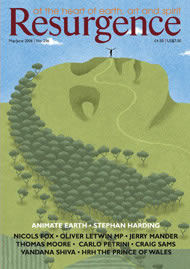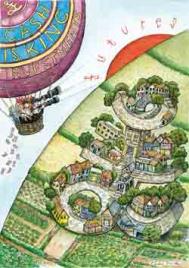AS THE PROPORTION of those in income-earning work falls to an all-time low, the need for greater savings to see us through old age is taken as axiomatic. The only question on the political agenda is how this is to be achieved. It is now a legal obligation in some European countries for working citizens to set aside savings for old age. Across the industrialised world, pension provision defines one of the critical battle lines between the state on the one side and trade unions and civil society groups on the other.
I know many people who have never had pensions, and a good number of those who have (myself included) are currently seeking to cash them in. So, what is happening?
Do pensions work?
My own exploration into the true nature of the ‘security’ we seek in old age and whether pensions truly provide the best way to deliver it began several years ago. In quick order, I came to three striking discoveries. The first was that whatever type of security it is we are looking for, it is not to be found in the stock-market, where the bulk (over 70%) of UK pension funds are invested. Millions of people saw the value of their private investments eroded as the value of the stock-market fell by 43% in the three years up to 2003: UK pension funds fell in value by £250 billion in 2002 alone.
My second realisation was that many, if not most, of the goods and services that people need in their old age would best be provided for not by way of cash transactions but through the healthy working of functioning communities. It is only the habit of loneliness and isolation that makes people believe that care, company and wellbeing are best provided by the market.
The final insight was that the way in which pension funds currently operate makes the realisation of true security all but impossible. This is because the £530 billion invested annually in the stock-market by UK pension-fund managers helps fuel an economic system that undermines community vitality and devours its own resource base while increasing vulnerability to shock at every level of the system. Community dislocation means that people feel the need to invest in pension funds that drive a system that further weakens community fabric.
Stock-market financing permits the opening of more out-of-town supermarkets, resulting in the closure of small, local shops from the town centre, a drop in local incomes and employment, a flight of youth to the cities and, eventually, the need for higher investment in pensions to pay for services that neither family nor the dislocated community are any longer able, or willing, to provide.
The stock-market is a giant bubble with nothing but the hot air of investor confidence keeping it afloat. The collateral for today’s investment is the eternal belief in tomorrow’s expansion. When we dare to look unflinchingly into the future we see the myth of eternal growth laid bare. But in a system where most money is created through interest-bearing loans, without the collateral of future economic growth, the system folds.
THE RESPONSE OF most people I know is to withdraw whatever savings they have from the pension-fund scam and to seek to invest in different, more resilient and useful forms of capital. These tend to fall into two broad categories: social capital, in the form of service to one’s community; and physical capital, in the form of productive land or buildings. Nonetheless, as just about anyone associated with sustainable community initiatives will attest, money for such projects still tends to be very thin on the ground. Stock-markets have recovered over the last couple of years, creating the happy illusion that the crisis of the early years of this century was no more than a blip.
People’s Pensions Funds
So, what can be done to move towards a system that promotes real security for those past working age, while building on and protecting the true wealth of our ecosystems and communities? A recent New Economics Foundation discussion paper, People’s Pensions: New Thinking for the 21st Century, sets out a daring and imaginative proposal. It recommends the creation of People’s Pension Funds, which would be used to build community-level infrastructure projects – schools, hospitals, community centres, and so on. Each fund would be linked to a government department, a local authority, other statutory bodies such as an NHS Trust or an education authority, or a non-profit body undertaking public works. People would have a choice between which bodies they would invest in and would be able to specify which types of project they wanted their funds to support. Pension ‘dividends’ would be paid from rental income on the facilities built.
This is an ingenious proposal whose impact would be to mobilise substantial financing for socially desirable infrastructure projects, promote community ownership of its own resources, and base the security of those of a pensionable age on real community assets. However, realistically, it is unlikely to come into law any time soon. Politics just does not move that quickly.
I do, however, wonder whether citizens’ groups might use the model proposed to introduce similar schemes unilaterally at a community level. Let me provide a specific example. The ecovillage where I live, Findhorn, in the north of Scotland, is currently seeking investment for several infrastructure projects. These include a new sustainability training centre (around £1.5 million), three new wind turbines to complement our existing one (£0.5 million), and an ongoing programme to replace ageing caravans and bungalows with high-quality ecological housing and build around fifty new eco-houses. All of these facilities will provide revenue streams that could be used to repay dividends to investors over time.
Findhorn is just one of a large number of initiatives around the world seeking to create real and tangible wealth in the form of seed banks, renewable energy facilities, community-supported organic agriculture box schemes, sustainability training centres, buildings with high levels of insulation, biological waste-water treatment systems, and so on. A lack of financing is a perennial obstacle, yet such projects, provided they are well designed and managed, offer much more secure and life-enhancing investments than just about anything on offer on the world’s stock-markets.
The idea of creating Sustainability Pension Funds that bring together into one portfolio various initiatives at ecovillages and other sustainability centres is one that is worth pursuing.
What would be new would be to link the question of investment in ecovillage infrastructure with the pensions issue. That is, by way of an awareness-raising programme to demonstrate that conventional pensions are neither secure nor life-serving, it may be possible to persuade friendly investors to divert some of their financial assets towards ecovillage and other sustainability initiatives.
The task before us now is to link- up those wishing to save for a secure and happy future with those who are in the process of creating it.







